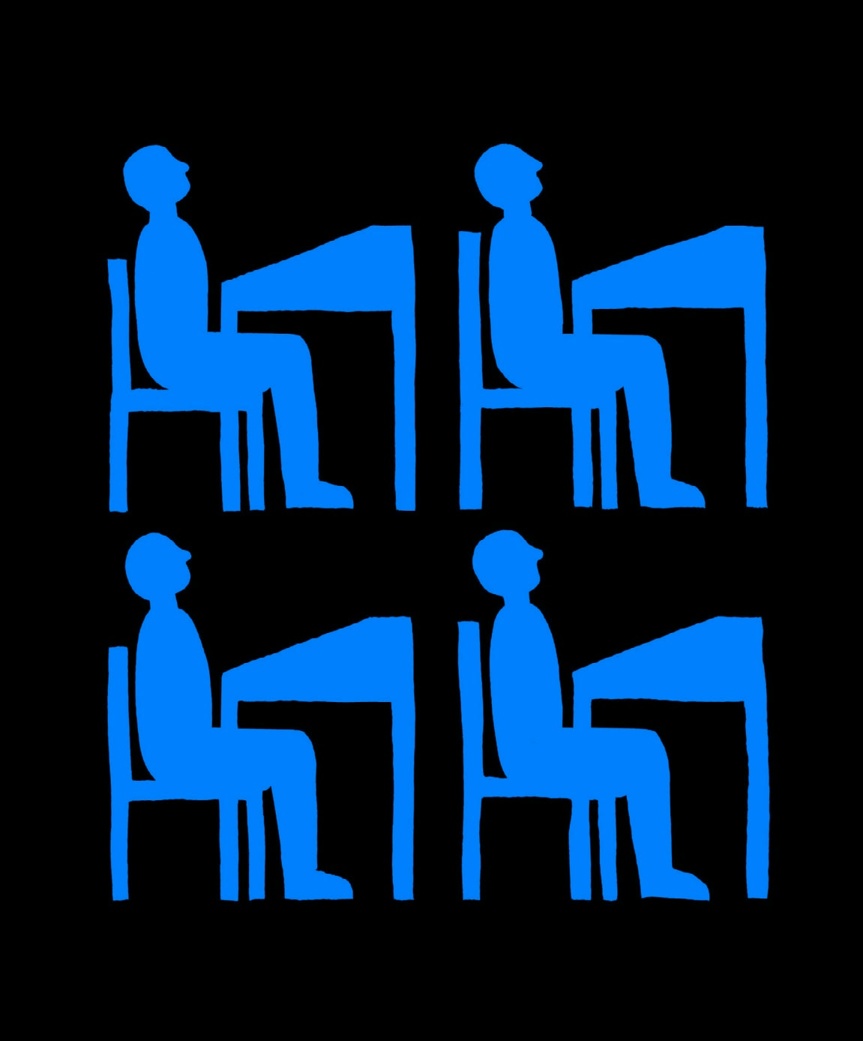The Psychology Book (22 page)
Read The Psychology Book Online
Authors: Unknown

to a teaching post at the
Interestingly, although
devised his CAVD (Completion,
College for Women of Case
Western Reserve in Cleveland,
Thorndike was studying animal
Arithmetic, Vocabulary, and
Ohio, but he returned to
behavior using what were to
Directions) test. It became the
Columbia just a year later, in
become standard behaviorist
model for all modern intelligence
1899, teaching there until his
methods —and authoring a book,
tests, and assessed mechanical
retirement in 1939. In 1912, his
Animal Intelligence
(1911), which
intelligence (understanding of how
peers elected him President
was to become a classic of early
things work), as well as abstract
of the American Psychological
behaviorism—he considered
intelligence (creative ability) and
Association. Thorndike
himself primarily an educational
social intelligence (interpersonal
continued to research and
psychologist. He had originally
skills). Thorndike was especially
write until his death, aged 74,
intended to examine animal
interested in how age might affect
in Montrose, New York.
intelligence, not behavior. He
learning, and also proposed a
wanted to show, for example, that
theory of learning that remains at
Key works
animals learned by simple trial
the heart of educational psychology
and error rather than by using a
to this day, a contribution that is
1905
The Elements of
Psychology
faculty of insight, an idea that was
perhaps what Thorndike would
1910
The Contribution of
prevalent in psychology at the time:
have wished more than anything
Psychology to Education
“In the first place, most of the books
else to be remembered for. However,
1911
Animal Intelligence
do not give us a psychology, but
it is for his enormous influence on
1927
The Measurement of
rather a eulogy of animals. They
the behaviorist movement that
Intelligence
have all been about animal
Thorndike is most often lauded. ■

ANY
REGARDLESS OO
F TH N
EIR NAE
TURE
CAN BE TRAINED TO BE
ANY
JOHN B. WATSO T
N (18 H
78–19I
58 N
)
G


68 JOHN B. WATSON
IN CONTEXT
APPROACH
Pavlov demonstrated that
Classical behaviorism
The fundamental (unlearned)
animals can be taught
human emotions are
fear
,
behavioral responses
BEFORE
rage
, and
love
.
through
conditioning
.
1890s
German-born biologist
Jacques Loeb (one of Watson’s
professors) explains animal
behavior in purely physical-
chemical terms.
1890s
The principle of
classical conditioning is
established by Ivan Pavlov
using experiments on dogs.
These
feelings
can be
Humans, too, can be
attached to objects through
conditioned to produce
1905
Edward Thorndike
stimulus–response
physical responses
to
shows that animals learn
conditioning
.
objects and events.
through achieving successful
outcomes from their behavior.
AFTER
1932
Edward Tolman adds
cognition into behaviorism in
his theory of latent learning.
1950s
Cognitive psychologists
Anyone, regardless
focus on understanding the
People can be conditioned
of their nature,
mental processes that both
to produce
emotional
can be trained
lie behind and produce
responses
to objects.
to be anything.
human behavior.
B
y the beginning of the 20th psychologists of the 20th century. Before Watson’s research at Johns century, many psychologists
Through his work on the stimulus–
Hopkins University, in Baltimore,
had concluded that the
response learning theory that had
Maryland, the majority of
human mind could not be adequately
been pioneered by Thorndike, he
experiments on behavior had
studied through introspective
became regarded as the “founding
concentrated on animal behavior,
methods, and were advocating a
father” of behaviorism, and he did
with the results extrapolated to
switch to the study of the mind
much to popularize the use of the
human behavior. Watson himself
through the evidence of behavior in
term. His 1913 lecture,
Psychology
studied rats and monkeys for his
controlled laboratory experiments.
as the Behaviorist Views It
, put
doctorate but (perhaps influenced
John Watson was not the first
forward the revolutionary idea that
by his experience working with the
advocate of this thoroughgoing
“a truly scientific psychology would
military during World War I) was
behaviorist approach, but he was
abandon talk of mental states… and keen to conduct experiments using
certainly the most conspicuous.
instead focus on prediction and
human subjects. He wanted to
In a career cut short by his marital
control of behavior.” This lecture
study the stimulus–response model
infidelity, he became one of the
became known to later psychologists
of classical conditioning and how it
most influential and controversial
as the “behaviorist manifesto.”
applied to the prediction and

BEHAVIORISM 69
See also:
Ivan Pavlov 60–61 ■ Edward Thorndike 62–65 ■ Edward Tolman 72–73 ■ B.F. Skinner 78–85 ■
Joseph Wolpe 86–87 ■ Kenneth Clark 282–83 ■ Albert Bandura 286–91
a local children’s hospital. The tests
On a separate occasion, while
were designed to see whether it is
Albert was sitting on the mattress,
possible to teach an infant to fear an
Watson struck a metal bar with a
animal by repeatedly presenting it at
hammer to make a sudden loud
the same time as a loud, frightening
noise; unsurprisingly, Albert became
noise. Watson also wanted to find
frightened and distressed, bursting
Psychology, as the
out whether such a fear would
into tears. Watson now had an
behaviorist views it, is a purely transfer to other animals or objects; unconditioned stimulus (the loud objective experimental branch and how long this fear would
noise) that he knew elicited a
of natural science.
persist. Today, his methods would
response of fear in the child. By
John B. Watson
be considered unethical and even
pairing this with the sight of the
cruel, but at the time they were seen
rat, he hypothesized that he would
as a logical and natural progression
be able to condition little Albert to
from previous animal studies.
become afraid of the animal.
In the now famous “Little Albert
When Albert was just over 11
experiment,” Watson placed the
months old, Watson carried out the
healthy but “on the whole stolid
experiment. The white rat was
control of human behavior. He
and unemotional” baby Albert on
placed on the mattress with Albert,
believed that people have three
a mattress and then observed his
then Watson hit the hammer on the
fundamental emotions—fear, rage,
reactions when introduced to a dog,
steel bar when the child touched
and love—and he wanted to find
a white rat, a rabbit, a monkey, and
the rat. The child burst into tears.
out whether a person could be
some inanimate objects, including
This procedure was repeated seven
conditioned into feeling these in
human masks and burning paper.
times over two sessions, one week
response to a stimulus.
Albert showed no fear of any of
apart, after which Albert became
these animals or objects and even
distressed as soon as the rat was
Little Albert
reached out to touch them. In this
brought into the room, even when it
With his research assistant, Rosalie
way, Watson established a baseline
was not accompanied by the noise.
Rayner, Watson began a series of
from which he could measure any
By repeatedly pairing the rat
experiments involving “Albert B,”
change in the child’s behavior
with the loud noise, Watson was
a nine-month-old baby chosen from
toward the objects.
applying the same kind of classical ❯❯
John B. Watson
Born into a poor family in South
during World War I, then
Carolina, John Broadus Watson’s
returned to Johns Hopkins.
childhood was unhappy; his father
Forced to resign after an affair
was an alcoholic womanizer who
with his research assistant,
left when Watson was 13, and his
